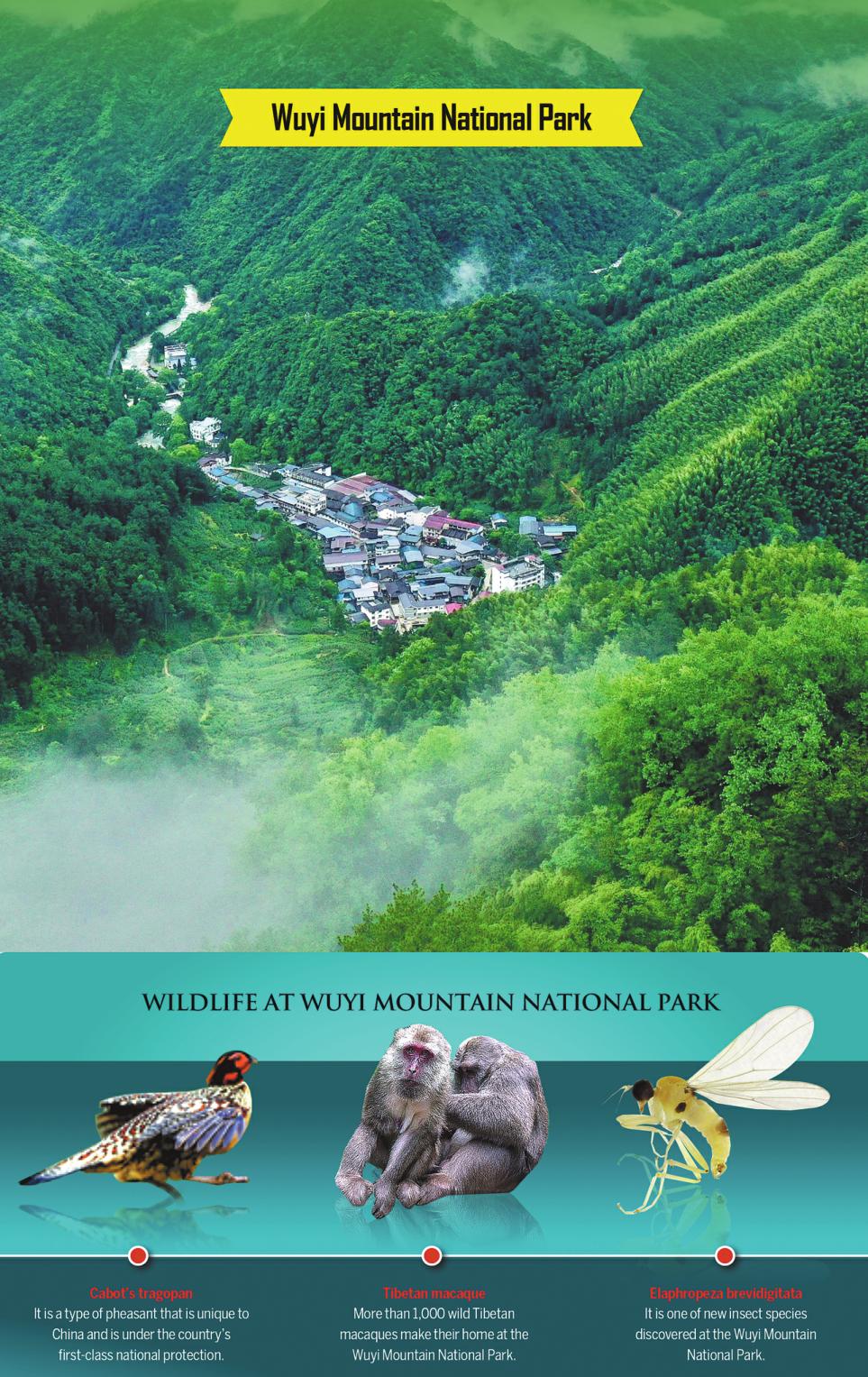Park hits peak for environmental protection
The Wuyi Mountain National Park, which straddles the eastern provinces of Fujian and Jiangxi, is the only mixed facility among China's first five national parks as it features cultural and scenic aspects, and is also listed as a UNESCO World Heritage Site.
In 2021, China announced the first batch of five national parks — including the park in Wuyi — during the 15th Conference of the Parties to the United Nations Convention on Biological Diversity held in Kunming, capital of Southwest China's Yunnan province.
In total, the park's mountains and land cover about 128,000 hectares. The facility is located in a central subtropical zone, which results in a mild, humid climate — its average temperature throughout the year is 17-19 C, while annual precipitation reaches 1,684 to 1,780 millimeters.
The park's highest peak is Huanggang Mountain, which stands on the border between Fujian and Jiangxi at a height of 2,160.8 meters. The Jiangxi authorities said the mountain is home to 50 percent of the province's "higher" flora, such as mosses, seed-bearing plants and ferns, and the gene pool for 60 percent of local vertebrate species.
It also provides a habitat for many rare, endemic species such as the Liriodendron tree, aka the Chinese tulip poplar, and Cabot's tragopan, a species of pheasant so rare it has been dubbed the "giant panda of birds". The abundance of archaeological sites, human relics, ancient temples and academies saw Wuyi Mountain listed as a UNESCO World Heritage Site for its cultural, biodiversity and natural values in December 1999.
The park has the largest, most complete and representative example of subtropical forests, compared with other areas of the world at the same latitude. One 21,070-hectare area of primary forest and vegetation is unspoiled by human activity.
Varied flora and fauna
The park's management bureau said that 3,404 species of higher plants in 272 families have been recorded in the facility, which has a rich and diverse mix of subtropical, temperate and tropical plants. It is also famous for its large number of orchid families, with 78 species from 32 families reported in the park so far, such as Yoania japonica Maxim and Lecanorchis japonica Blume.
Scientists have said that some trees in the park are almost 1,000 years old, and they "veil the park in mystery". For example, one Cassia tree that stands in the grounds of the Wuyi Temple, where ancient emperors worshipped the gods, can be traced back to the Song Dynasty (960-1279), making it about 880 years old.
In addition, the park's sophisticated landforms and varied ecosystem provide good habitats for many rare animals and endangered insects. That has seen it described as an "insect world", "a key to opening up the world of amphibians and reptiles", and "a heaven for birds".
According to academic surveys of the species in the park, the 769 recorded wild vertebrates account for about 33.3 percent of the total in Fujian, while insect species in the park account for 20 percent of the national total of 7,925.
Also, 126 species out of 8,694 wild animals living in the park are listed as endangered and are under State-level protection. They include the black muntjac, a type of deer that has white stripes on its tail and a light summer coat that darkens in winter.
Moreover, 74 typical species in the Wuyi Mountain region, such as the Chong'an mustache toad and the Chung-an ground lizard, live in the park.
The facility is also home to abundant valleys and rivers, so it has a diverse range of aquatic life, including zooplankton, various fish species and benthic life forms, which are organisms that live at the bottom of deep lakes and rivers.
Culture and history
Wuyi Mountain, which forms one of the main sections of the park, played a key role in the development of Confucianism and Taoism in China, and is part of the history of tea production and appreciation. It is also home to many stone inscriptions that have a history going back thousands of years.
According to an introduction on the park's official website, the Yue people, a tribe that lived in southern China in ancient times, started hunting and fishing at Wuyi Mountain during the Neolithic Period, roughly 5,000 to 2,000 years ago.
The mountain is also famous for ancient funeral practices, such as the boat-roof shaped coffins that hang from cliffs in some undisturbed areas and have a history of more than 3,000 years.












